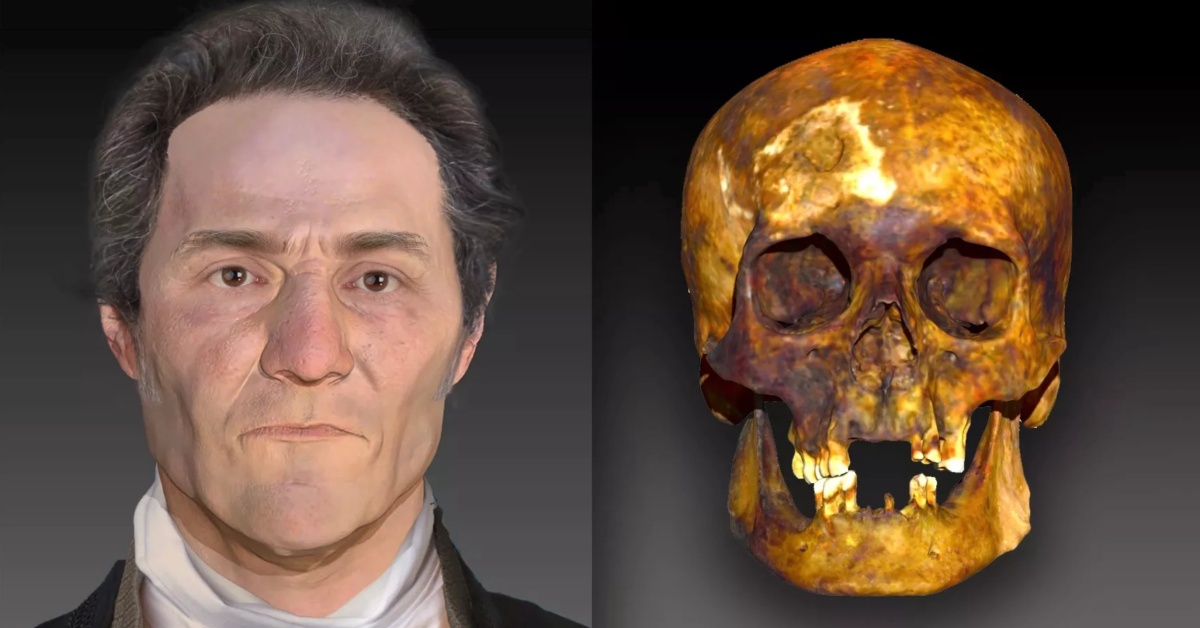The face of a man 18th-century locals believed to be a “vampire” has been reconstructed using DNA evidence that also revealed a bizarre burial ritual.

In 1990, children from Griswold, Connecticut, found skulls near a gravel pit. Excavations following the accidental discovery uncovered 27 graves, including that of an unidentified middle-aged man whose coffin was engraved with the inscription ‘JB55’.
The unusual arrangement of the remains led archaeologists to conclude that the man was considered a vampire by his contemporaries, and his thigh and leg bones were placed crosswise under the skull to prevent him from rising. The DNA sample taken from the unidentified man’s femur was tested, but the technology of the time could not yet identify the body.

According to a 2019 study published in in the MDPI journal, researchers at the US National Museum of Medicine and Health (NMHM) managed to trace the identity of an unknown man previously identified as JB55. Based on the letters engraved on the coffin and the numbers identified as his age, the man was registered as John Barber. The bone fragments suggest that he was a middle-aged laborer who, based on the lesions on his ribs, most likely suffered from tuberculosis.
The disease, then known as pneumonia, had symptoms including a bloody cough, jaundice, red, swollen eyes and was usually fatal due to a lack of antibiotics. Tuberculosis was spread by droplet infection, but at the beginning of the 19th century people were unaware of bacteria and pathogens, and instead believed that those who died from the disease would come back from the grave as vampires to infect the surviving members of the community.
According to a report in Live Science, at the International Symposium on Human Identification (ISHI) in Washington, D.C., held between October 31 and November 3, researchers from Parabon NanoLabs in Virginia presented the following reconstruction of Barber’s face, in addition to a DNA analysis of the ‘vampire’s’ remains.

According to the results, Barber, code-named JB55, did indeed suffer from tuberculosis and died at the age of 55. The Connecticut man’s skin was light in color, his face was freckled, his hair was brown or black, and his eyes were brown, most likely hazel.
Source: 1, 2, 3, 4, 5
